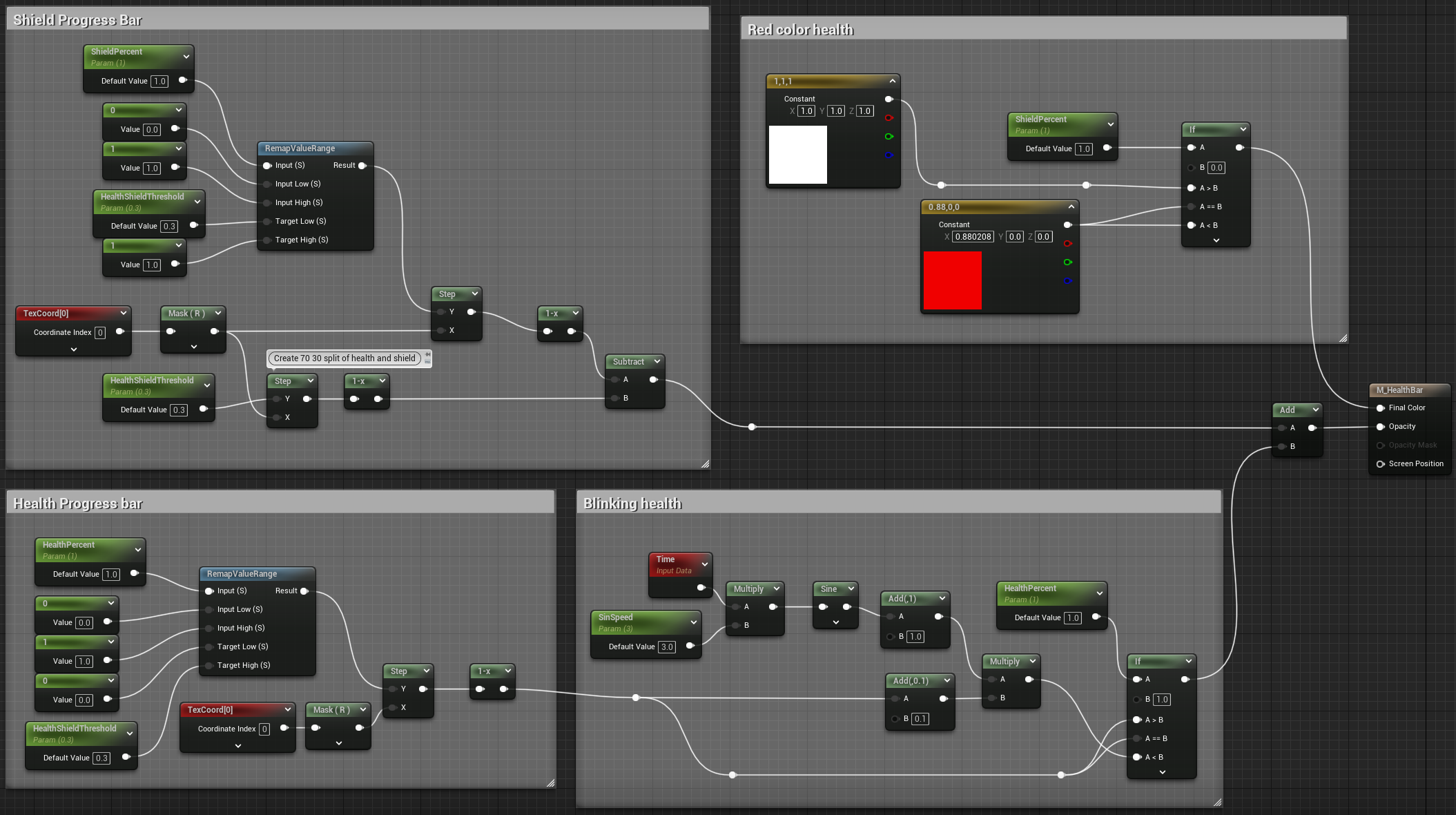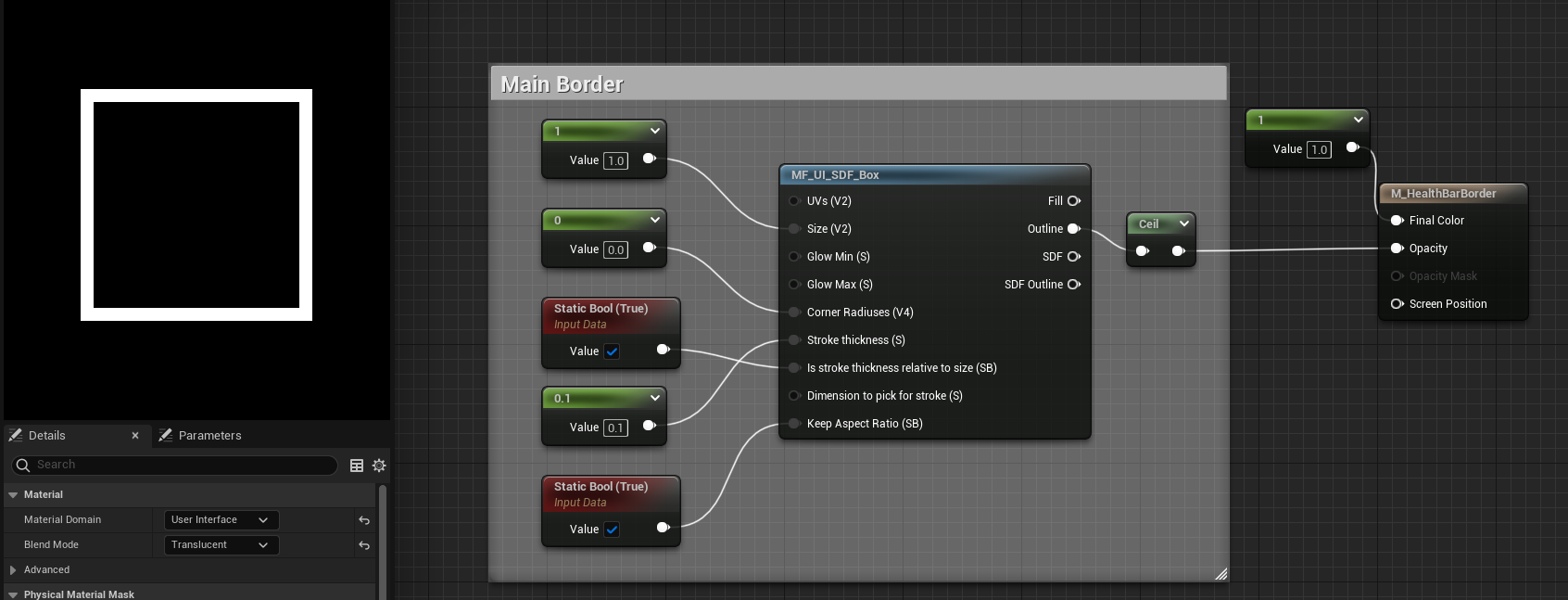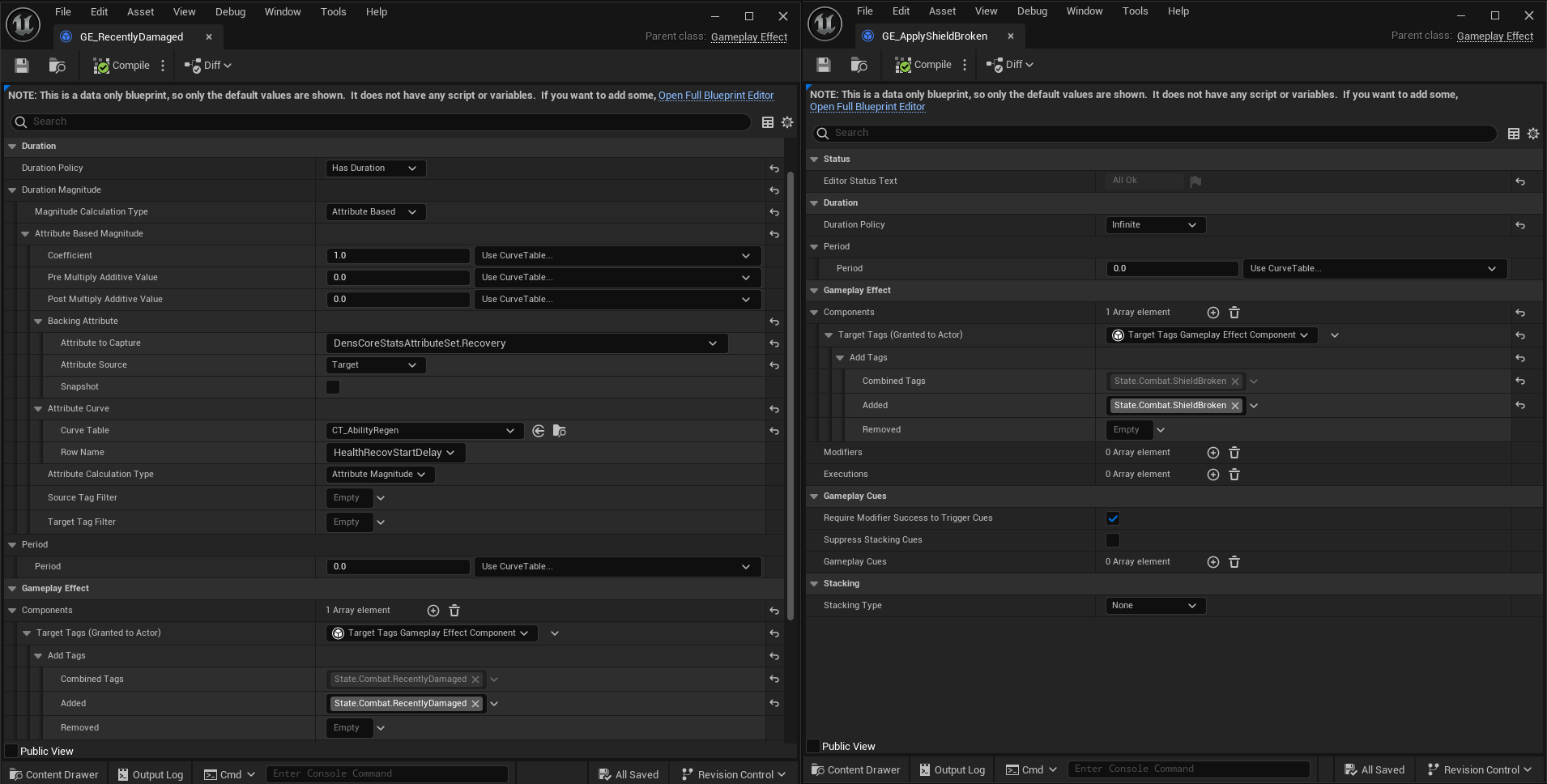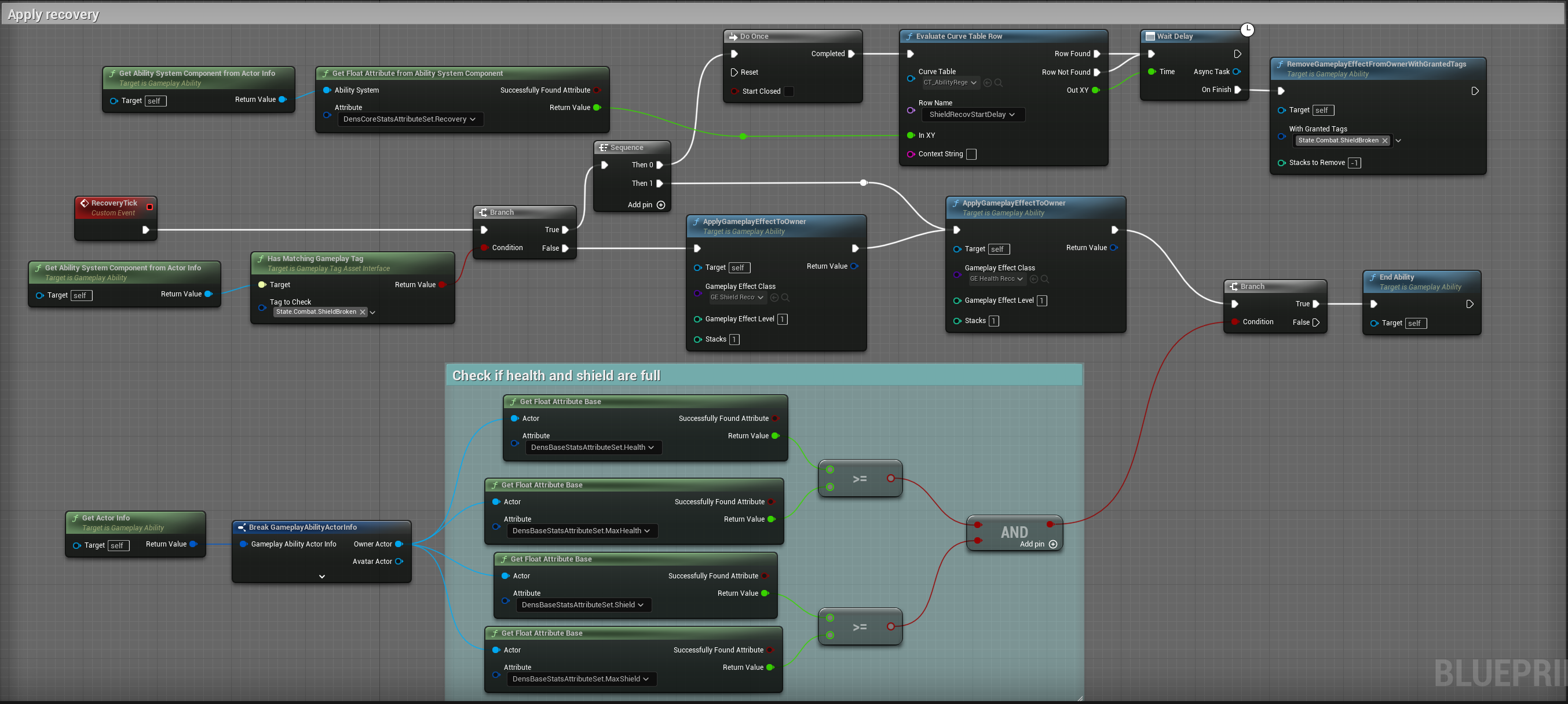Health bar and recovery
Recreating the destiny 2 health bar and recovery system using materials, UMG and GAS.
Introduction
In this article I will show and explain how the healthbar system from Destiny 2 was recreated in Unreal Engine to give the following result.
The visual effects are all carried out in a single material within the user widget, while the health recovery is managed using gameplay abilities.
How the healthbar and recovery work in Destiny 2
In Destiny 2, the healthbar UI is hidden until a player takes damage. Once damage occurs, the healthbar immediatly appears and displays the damage dealt, staying up in the HUD until a players health is fully recovered. The actual healthbar is split into two main sections, the player’s Shield and the player’s Health.

The Shield makes up the first 70% of a players health bar. When the Shield is damaged but not fully depleted, the bar’s colour remains white. However when the Shield is broken (apart from audio, visual effects and other potential gameplay related effects triggering), the healthbar becomes red and flashing (When a player’s Health is full but the Shield is depleted, the flashing effect stops but the color remains red). After a few seconds of not taking damage the player will start regenerating their Health and a few seconds after that the Shield will start regenerating. Any further damage taken will stop the regeneration and start the timer again. The rate of regeneration and the waiting time since the last damage was taken all depend on the player’s Recovery stat. The Recovery stat goes from 0 to 100, increasing its efficacy every 10 levels. For example a player with 0 recovery will back to full healthbar in 9 seconds after being damaged while a player with 100 recovery will achieve the same in 6 seconds.
Health bar UI
Health bar material
The first step was to create a material that would manage the health bar depleting and regenerating based on two float values, HealthPercent and ShieldPercent which should be between 0 and 1. To emulate the behaviour explained above the following constraints had to be followed:
-
Healthmust occupy the first 30% of the material and theShieldthe last 70% - If
ShieldPercent> 0, then the material colour must be white. - If
ShieldPercent= 0 andHealthPercent= 1, then the material colour must be red - If
HealthPercent< 1, then the material colour must be red with a flashing effect for theHealthsection and a darker semi-transparent flashing red should also occupy the rest of the material.
Since the material is to be used in the UI, first the Material Domain was set to User Interface in the details tab of the material. Then the material was created as follows:

Next, to create the small border that goes around the main health bar, a material using the SDF box function from the UI Material Lab project from Epic Games.

Creating the UMG health bar widget
A User Widget blueprint was created as seen below. Each component was placed inside a grid panel with the main two being images for the border and health bar. Then an extra horizontal box with images was placed to match the decoration ornaments around the Destiny 2 health bar.

For the health bar widget image, a dynamic material instance is created on the widgets pre-construct event, and then it is immediatly asigned to it. A widget animation was created for the health bar fadeout and then the functionality was created using four similar functions seen in the image below. The FadeOutHealthBar function gets called from C++ when a delegate that monitors the status of the health and shield attributes of the player is fired when they are full and plays the fade out widget animation. The functions which set the value of the ShieldPercent and HealthPercent parameters in the dynamic material get called from C++ when an OnGameplayAttributeValueChanged() delegate for the respective attributes is fired. These functions also call the ShowHealthBar function which instantly shows the health bar on the players HUD (doing the opposite of the FadeOutHealthBar function but faster)

Health recovery system
The health recovery system as well as most of the gameplay logic of this project uses Unreal’s Gameplay Ability System. (A very good starting resource can be found in Tranek’s GAS documentation).
First, the recovery system becomes functional thanks to the GA_RecentlyDamaged and GA_OnShieldBroken Gameplay Abilities GA (These are triggered from events that are handled by the Damage Pipeline). Their main functionality is to apply a Gameplay Effect GE that applies the State.Combat.RecentlyDamaged and State.Combat.ShieldBroken gameplay tags to the player damaged respectively.
The State.Combat.ShieldBroken is applied by an infinite GE that will later be removed within the GA_Recovery gameplay ability.
The State.Combat.RecentlyDamaged is applied by a duration GE, which determines its duration using the player’s Recovery attribute and a curve table as follows:


Once the State.Combat.RecentlyDamaged is applied to a player, the GA_Recovery ability is automatically activated and handles the rest of the recovery system.
GA_Recovery Gameplay Ability
The GA_Recovery ability is set up to activate when the State.Combat.RecentlyDamaged is added to the player’s Ability System Component (ASC). Once the ability is activated it starts up an ability task which will wait for the tag to be removed (which will happen a few seconds after the player stops taking damage depending on the Recovery attribute).

If at any point the player receives damage and the tag is newly added, the ability will cancel, cancelling the main timer handle and will start from the beggining (wait for the tag to be removed …etc).
The main recovery tick event gets executed once every 16ms from the Set Timer by Event node set to looping. On every execution, the health recovery instant GE is applied to the player, which increments the player’s Health attribute by a small amount depending on Recovery attribute. This small amount is obtained from the curve table shown previously. On the first execution of the RecoveryTick event, if the State.Combat.ShieldBroken tag is present, a timer (whose duration again is extracted from the recovery curve table) will be started after which the GE that added that tag will be removed from the player and thus removing that tag. After that tag is removed, every further execution of the event will also apply an instant GE which increments the player’s Shield attribute.

At the end of each execution, the current value of the Health and Shield attributes are compared to the MaxHealth and MaxShield attributes to determine if the health bar is completely full, at which point the gameplay ability will end.
Improvements to be made
While the main functionality of the health bar is finished, a few improvements to the damage taking system will still be made. Currently, a Gameplay Cue GC is executed every time a player takes damage to perform a small screen shake, however this feedback will be eventually improved to add the following:
- A blood/red effect around the screen when the player takes damage handled by.
- Different first person flinch animations on the players first person model.
- Niagara particle effect representing the shield being broken around the player when the player’s shield is broken.
- Add audio cues to these effects.